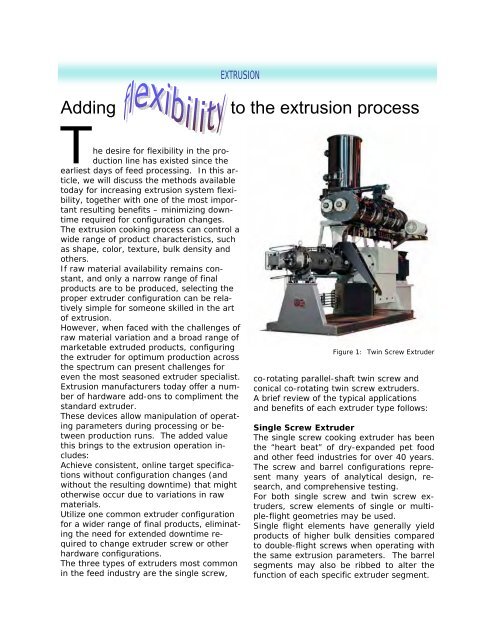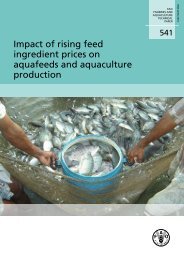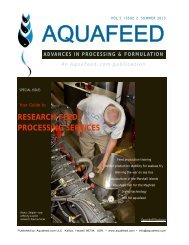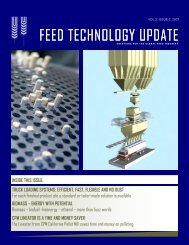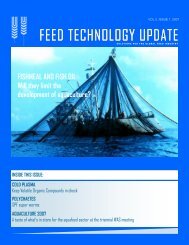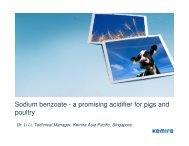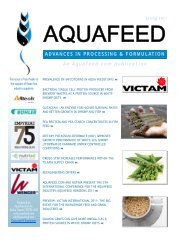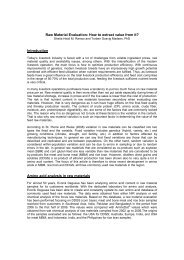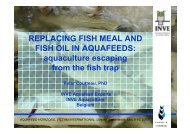FEED TECHNOLOGY UPDATE - AquaFeed.com
FEED TECHNOLOGY UPDATE - AquaFeed.com
FEED TECHNOLOGY UPDATE - AquaFeed.com
You also want an ePaper? Increase the reach of your titles
YUMPU automatically turns print PDFs into web optimized ePapers that Google loves.
AddingEXTRUSIONThe desire for flexibility in the productionline has existed since theearliest days of feed processing. In this article,we will discuss the methods availabletoday for increasing extrusion system flexibility,together with one of the most importantresulting benefits – minimizing downtimerequired for configuration changes.The extrusion cooking process can control awide range of product characteristics, suchas shape, color, texture, bulk density andothers.If raw material availability remains constant,and only a narrow range of finalproducts are to be produced, selecting theproper extruder configuration can be relativelysimple for someone skilled in the artof extrusion.However, when faced with the challenges ofraw material variation and a broad range ofmarketable extruded products, configuringthe extruder for optimum production acrossthe spectrum can present challenges foreven the most seasoned extruder specialist.Extrusion manufacturers today offer a numberof hardware add-ons to <strong>com</strong>pliment thestandard extruder.These devices allow manipulation of operatingparameters during processing or betweenproduction runs. The added valuethis brings to the extrusion operation includes:Achieve consistent, online target specificationswithout configuration changes (andwithout the resulting downtime) that mightotherwise occur due to variations in rawmaterials.Utilize one <strong>com</strong>mon extruder configurationfor a wider range of final products, eliminatingthe need for extended downtime requiredto change extruder screw or otherhardware configurations.The three types of extruders most <strong>com</strong>monin the feed industry are the single screw,to the extrusion processFigure 1: Twin Screw Extruderco-rotating parallel-shaft twin screw andconical co-rotating twin screw extruders.A brief review of the typical applicationsand benefits of each extruder type follows:Single Screw ExtruderThe single screw cooking extruder has beenthe “heart beat” of dry-expanded pet foodand other feed industries for over 40 years.The screw and barrel configurations representmany years of analytical design, research,and <strong>com</strong>prehensive testing.For both single screw and twin screw extruders,screw elements of single or multiple-flightgeometries may be used.Single flight elements have generally yieldproducts of higher bulk densities <strong>com</strong>paredto double-flight screws when operating withthe same extrusion parameters. The barrelsegments may also be ribbed to alter thefunction of each specific extruder segment.


